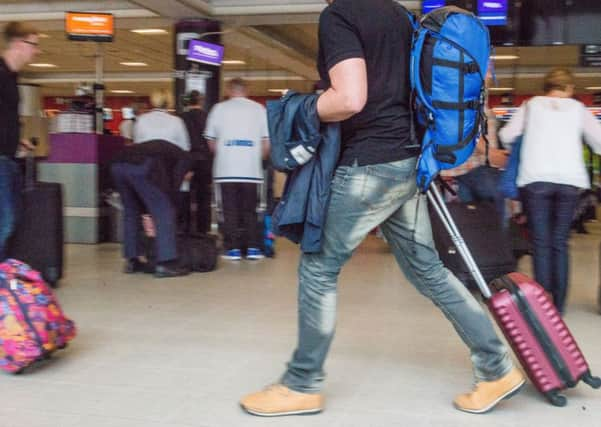Holiday costs push inflation towards four-year high
This article contains affiliate links. We may earn a small commission on items purchased through this article, but that does not affect our editorial judgement.


The Office for National Statistics (ONS) said the consumer prices index (CPI) measure of inflation reached 2.9 per cent last month, up from 2.7 per cent in April and surpassing economists’ expectations for an unchanged reading.
That is the highest level since June 2013 when CPI also reached 2.9 per cent, and was last surpassed in April 2012 when the index rose to 3 per cent.
Advertisement
Hide AdAdvertisement
Hide Ad• READ MORE: Inflation stalks the nation, but how high can it go?
The increase in the cost of living remains above the Bank of England’s 2 per cent target, and is likely to raise pressure on the Bank’s monetary policy committee (MPC) to consider hiking interest rates beyond 0.25 per cent when it meets later this week.
Viktor Nossek, director of research at WisdomTree in Europe, said: “The situation remains volatile. With uncertainty over the political situation in the UK already impacting Brexit negotiations, the pound has come under pressure once more and is now at its lowest level for months.
“It’s expected to remain volatile and succumb to more downward pressure, providing yet another unwelcoming rise to import cost induced inflationary pressures for consumers.
“Combined with indications of economic activity weakening, as evidenced by both actual GDP and retail sales decelerating markedly against a backdrop of weakening business sentiment, the BoE is unlikely to tighten soon. It’s clearing the path for inflation to hit 3 per cent.”
• READ MORE: Central banks go separate ways on interest rates
The biggest upward impact on the cost of living came from recreational and cultural goods and services – including holidays abroad – which overall rose 0.9 per cent between April and May compared with a fall of 0.4 per cent a year earlier. The cost of package holidays alone was up 0.6 per cent in May.
Britons have seen the cost of foreign travel increase following the post-Brexit vote collapse of sterling, which has knocked purchasing power abroad where the local currencies have gained strength versus the pound.
Advertisement
Hide AdAdvertisement
Hide AdCalum Bennie, savings expert at Scottish Friendly, said: “No end is in sight for hard-pressed consumers who see prices rising but growth in their wages failing to keep pace. It is no surprise then that consumers are reining back on spending or in many cases are turning to credit to get by as day-to-day living gets more expensive.
“Prices will continue to rise due to the falling pound and the higher costs of imports so the message has to be try to be prudent with spending and stash more cash. You will need more bang for your buck in the next few months and having more money in your financial armoury can only help.”
The cost of games, toys and hobbies shot up 2.7 per cent, thanks in part to a jump in computer game prices – but the ONS stressed that these are often dependent on bestseller charts and can fluctuate from month to month. Computer equipment also rose, particularly in areas like data processing which saw costs rocket 3.4 per cent.
The price of clothes jumped by 0.6 per cent between April and May, compared with a drop of 0.3 per cent last year, with children’s clothing the biggest driver behind the rise.
Consumers also saw decorating costs creep higher, thanks to higher prices for lounge furniture and textiles, which helped push household goods and furniture up 1.2 per cent overall.
Price hikes from utility companies sent the cost of electricity soaring 4 per cent, and comes after two of the “big six” energy providers – SSE and EON – introduced tariff increases at the end of April.
Downward pressure on the cost of living came from fuel pump prices, with petrol falling 1p to 116.4p per litre and diesel also dropping 1.6p to 118.7p between April and May.
Advertisement
Hide AdAdvertisement
Hide AdAirline prices also fell by 6.4 per cent month on month, after the effect of Easter travel boosted air fares in April.
The CPI including owner occupiers’ housing costs (CPIH) hit 2.7 per cent after reaching 2.6 per cent in April. CPIH is the ONS’s preferred measure of inflation, which includes costs associated with living in, maintaining and owning a home.
The retail prices index, a separate measure of inflation that includes council tax and mortgage interest payments, reached 3.7 per cent last month, up from 3.5 per cent in April.
HM Treasury said: “The government is helping families with the everyday cost of living by keeping taxes low, freezing fuel duty and increasing the national living wage. A typical basic-rate taxpayer now pays £1,000 less income tax than in 2010 and increases in the national living wage mean £1,400 extra a year for a worker since its introduction.”